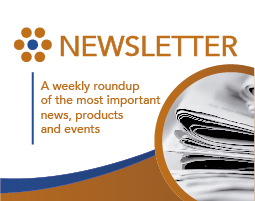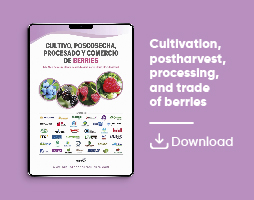Actualidad
Agriculture 4.0 applied to postharvest
Postharvest sensors, computer-vision systems, SVM (support-vector machine) classifiers, artificial intelligence ... tools to reduce losses in postharvest
Redaccion
Reducing losses of postharvest of fruit (PHF) should be pursued due to the alarming state of food crises around the globe. It is estimated that in the year of 2021, more than 193 million people were considered to be in a state of food insecurity crisis, with 570.000 of these people currently considered to be under a catastrophe phase, demanding urgent action.
A state of food insecurity crisis is when local capacities to respond to food shortage are insufficient and demand international aid. A catastrophe phase of hunger is characterized, according to Food Security Phase Classification and Cadre Harmonisé, by displaying widespread starvation and death[1].
With driving factors such as conflicts, extreme weather conditions, and economic shocks being the main drivers of food crises, the mitigation of food waste through enhanced practices on PHF is of uttermost importance.
Applications of novel technologies
This review aims to identify prominent studies related to applications of novel techniques involving sensors and machine learning for fruit postharvest physiology and quality through the method of narrative literature review.
Both topics are discussed as new advents of “Agriculture 4.0” (A4). In order to highlight the newest information available in the field, the review focused on studies from the last five years (2018 to 2022).
Fortunately, this paper also stands as a reference material for basic preliminary knowledge regarding the use of computational algorithms in PHF.
Machine learning and artificial intelligence are not synonyms
Many misconceptions may arise for professionals inserted in PHF but still not aware about the A4 possibilities. Sometimes it is easy to spot basic misconceptions being propagated due to that, like machine learning and artificial intelligence being interpreted as synonyms.
Clarifying such concepts, exposing scientific findings and debating about the prospects of A4 in PHF in the world is another priority for this paper.
Contents
Introduction
- Importance of technology for post-harvest of fruitWhat is Agriculture 4.0 for Post-Harvest of Fruit?
Main concepts
- Sensor technology
- Internet of Things
- Artificial Intelligence (AI)
- Machine Learning (ML)
- Applications of ML in PHF (postharvest of fruit)
Discussion
- Sensor technologies in PHF
- Classifiers in PHF
- Implementing A4 solutions under different economical contexts
- Market share of sensor technologies and AI in PHF
- The future of sensor technologies and AI in PHF
Final Considerations
Abstract
This review aims to identify prominent studies related to applications of novel techniques involving sensors and machine learning for fruit
storage through the method of narrative literature review, considering the concepts of Agriculture 4.0.
The advent of this new phase of agriculture brought new concepts for post-harvest professionals and scholars, such as to sensor technology and automated intelligence.
Additionally, a collection of 28 studies focusing on post-harvest of fruit in the span of five years (2018 to 2022) was carefully evaluated in order to discuss the most prevalent techniques explored in the field.
Therefore, this review provides a picture of achievements in a relatively new area of knowledge with supporting data and discussion analyzing the current panorama in the PHF context and how effective is the use of sensors associated with artificial intelligence for post-harvest of fruit.
Among the latest developments highlighted, the application of support vector machine classifiers as machine learning algorithms alongside computer vision sensors are the most promising technologies in terms of accuracy and popularity among recent scientific developments for post-harvest of fruit. Implementation of such new technologies must consider constraints related to different national contexts.
Sources
Agriculture 4.0 for Postharvest of Fruit: A review
Giovani Almeida Camargo, Hernani Batista da Cruz, Andreas Bühlmann, Felix Büchele,Cláudio Keske, Juliana Bonametti Olivato, Ricardo Antonio Ayub, Fábio Rodrigo THEWES, Sergio Tonetto de Freitas, and Daniel Alexandre Neuwald
Skeena Journal on Horticulture
https://skeenapublishers.com/journal/sjh/SJH-01-00005.pdf
Picture, Tomra
Related information, State of the art of sensors used in postharvest technologies











